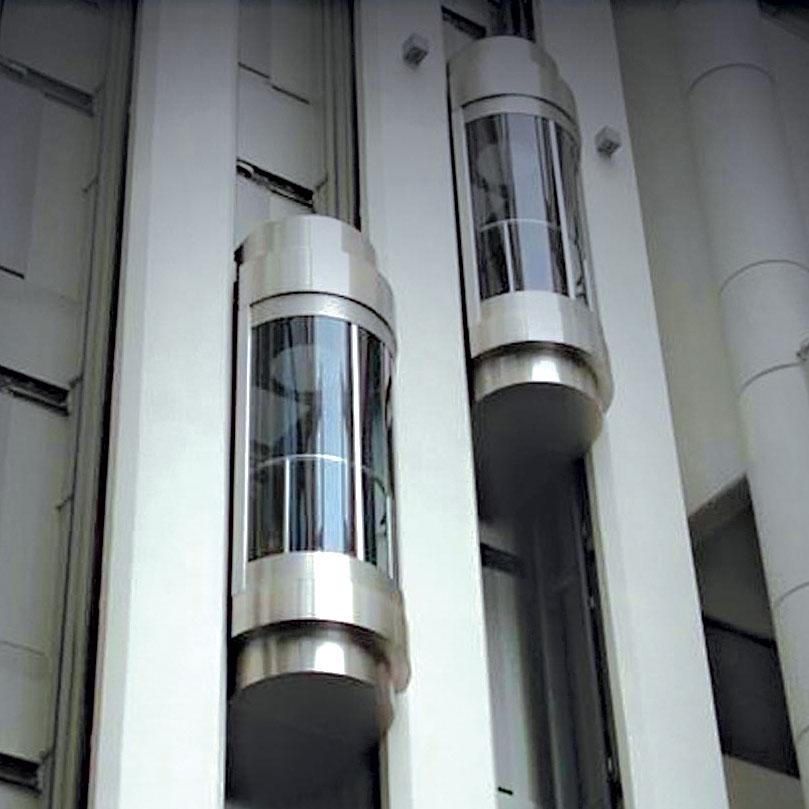London Lift Company: Trusted Specialists for All Your Vertical Transportation Demands
London Lift Company: Trusted Specialists for All Your Vertical Transportation Demands
Blog Article
Exploring the Globe of Lifts: Common Issues Dealt With by Various Lift Devices
As we browse with the upright transport systems of modern-day structures, lifts stand apart as an important element of our lives. However, behind their seamless operation lies a world of complex devices that can sometimes come across challenges. From hydraulic lifts to traction systems and machine-room-less styles, each lift type includes its collection of usual issues. Understanding these challenges is crucial for making sure the smooth performance of these vital systems. Let's check out the complexities that underlie the procedure of lifts and the potential problems that can occur, clarifying the intricate internet of lift systems.
Hydraulic Lifts
Hydraulic elevators, frequently chosen for low-rise buildings, use fluid pressure to manage the activity of the elevator automobile (lift repair companies). This mechanism includes a hydraulic pump pushing oil into a cylinder, causing the elevator to move in the desired direction. While hydraulic elevators are understood for their peaceful and smooth operation, they do come with their own collection of typical concerns
One common problem with hydraulic lifts is oil leak. The seals in the hydraulic system can put on out with time, bring about oil infiltration. If left unaddressed, this not just produces a mess however can likewise influence the elevator's performance. Furthermore, issues with the control system, such as malfunctioning valves or a malfunctioning pump, can create disruptions in the elevator's motion.
Regular upkeep and punctual repairs are important to make sure the smooth functioning of hydraulic elevators. By attending to these usual concerns proactively, structure owners can lessen downtime and ensure the safety and security and performance of their vertical transportation system.
Traction Lifts
When taking into consideration vertical transport systems in structures, an additional typical type besides hydraulic lifts is the traction lift. Traction lifts run using a system of ropes and weights that move the elevator car by grasping onto the hoist ropes. This mechanism allows for smoother and quicker vertical transportation contrasted to hydraulic systems.
One of the usual problems encountered by traction lifts is rope wear. The constant motion of the ropes within the traction system can result in wear and tear gradually, potentially triggering the elevator to breakdown or end up being hazardous for usage. Regular assessments and upkeep of the ropes are important to ensure the elevator's proper performance and security.
An additional problem that traction lifts might come across is connected to the control system. Problems with the control system can result in concerns such as unpredictable activity, delays in action times, or perhaps total shutdowns. Regular testing and upkeep of the control system are crucial to avoid such issues and guarantee the lift's dependability.
Machine-Room-Less (MRL) Elevators

Among the essential elements of MRL elevators is the portable gearless traction machine that is installed within the hoistway. This maker successfully drives the elevator vehicle without the demand for bulky equipment located in standard traction elevators. Additionally, MRL lifts typically utilize a counterweight system to balance the auto, additional enhancing their energy effectiveness.
In spite of their benefits, MRL elevators may encounter difficulties associated to repair and maintenance due to the restricted space for tools setup. Access for servicing parts within the shaft can be limited, calling for specialized training for service technicians. Correct maintenance schedules and normal assessments are vital to guarantee the ongoing smooth procedure of MRL lifts.
Overloading and Weight Limitation Issues
Overloading and weight restriction problems are important you can check here issues in elevator operations. Lift suppliers style raises with specific weight capabilities to make click here for more info certain guest security and tools long life.
When elevators are overwhelmed, it places excessive pressure on the electric motor, cables, and various other elements, possibly creating break downs or malfunctions. Safety and security systems such as sensing units and overload sensors are in area to stop elevators from relocating if they discover excess weight. Furthermore, surpassing weight limitations can lead to enhanced power intake and deterioration on the elevator system.
To alleviate straining issues, building managers must prominently display weight restrictions in elevators and educate passengers on the importance of sticking to these limitations - lift repair companies. Regular upkeep checks by certified specialists can likewise aid ensure that elevators are operating within secure weight criteria. By addressing overloading and weight limitation concerns proactively, building owners can boost elevator security and efficiency
Electrical System Failures
Surpassing weight restrictions in elevators can not just lead to mechanical problems however also possibly contribute to electrical system failures within the lift facilities. Electrical system failures are a crucial concern in elevator operation, as they can trigger unforeseen closures, malfunctions, or also security risks.
Normal maintenance and assessments are essential to determine and deal with prospective electric problems quickly, guaranteeing the secure and reliable procedure of elevator systems. By sticking to weight limitations and conducting routine electric system checks, building owners can alleviate the threat of electrical failings in lifts.
Conclusion

Hydraulic elevators, usually preferred for low-rise buildings, use fluid stress to manage the motion of the elevator automobile.When considering upright transportation systems in buildings, one more typical kind aside from hydraulic lifts is the traction lift. Grip elevators run using a system click now of ropes and counterweights that move the elevator cars and truck by clutching onto the hoist ropes. Unlike conventional elevators that call for a separate maker space to house the tools, MRL elevators incorporate most of the elements within the shaft, removing the need for a specialized maker space.In final thought, elevators deal with common problems such as hydraulic breakdowns, traction system failures, and electrical system problems.
Report this page